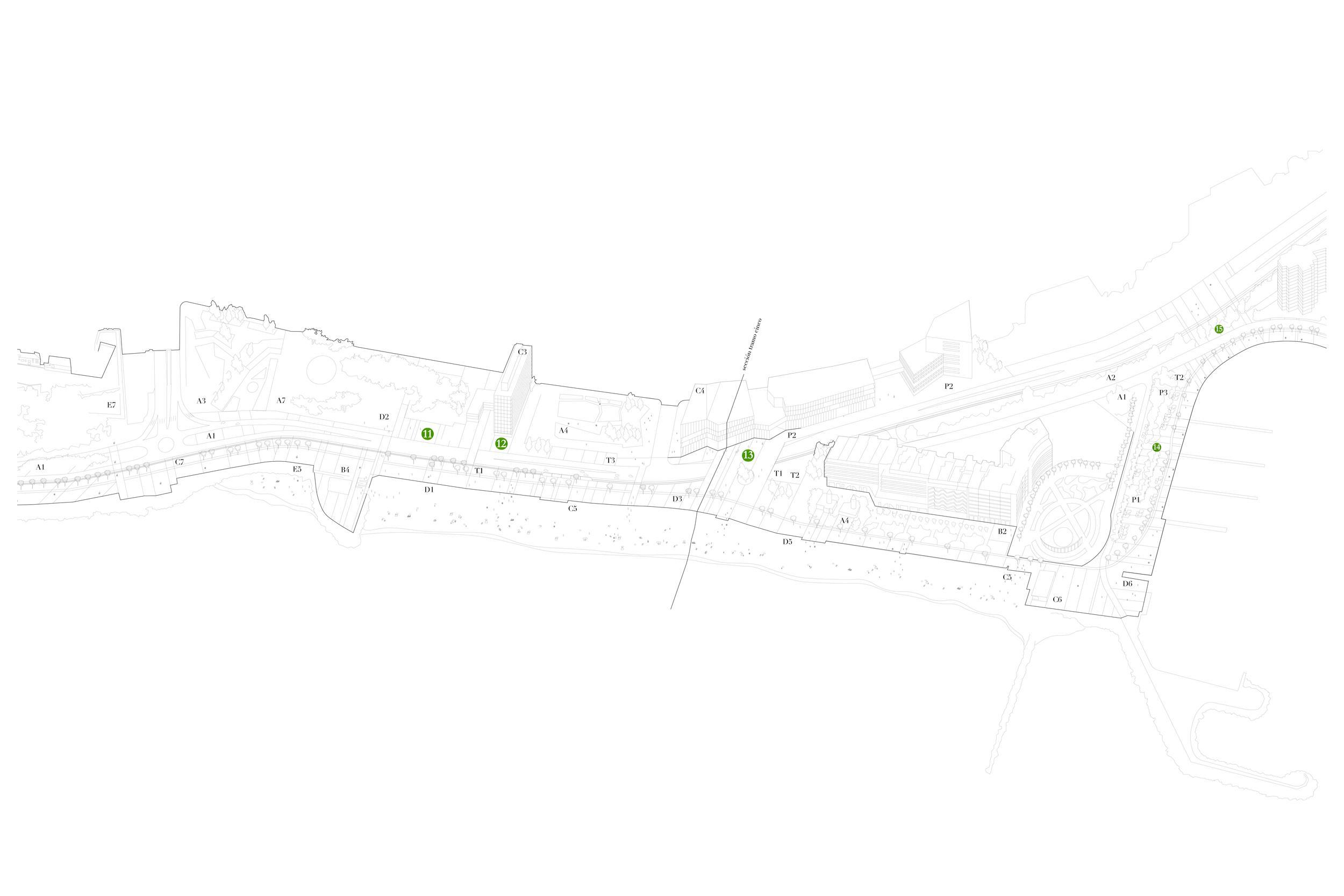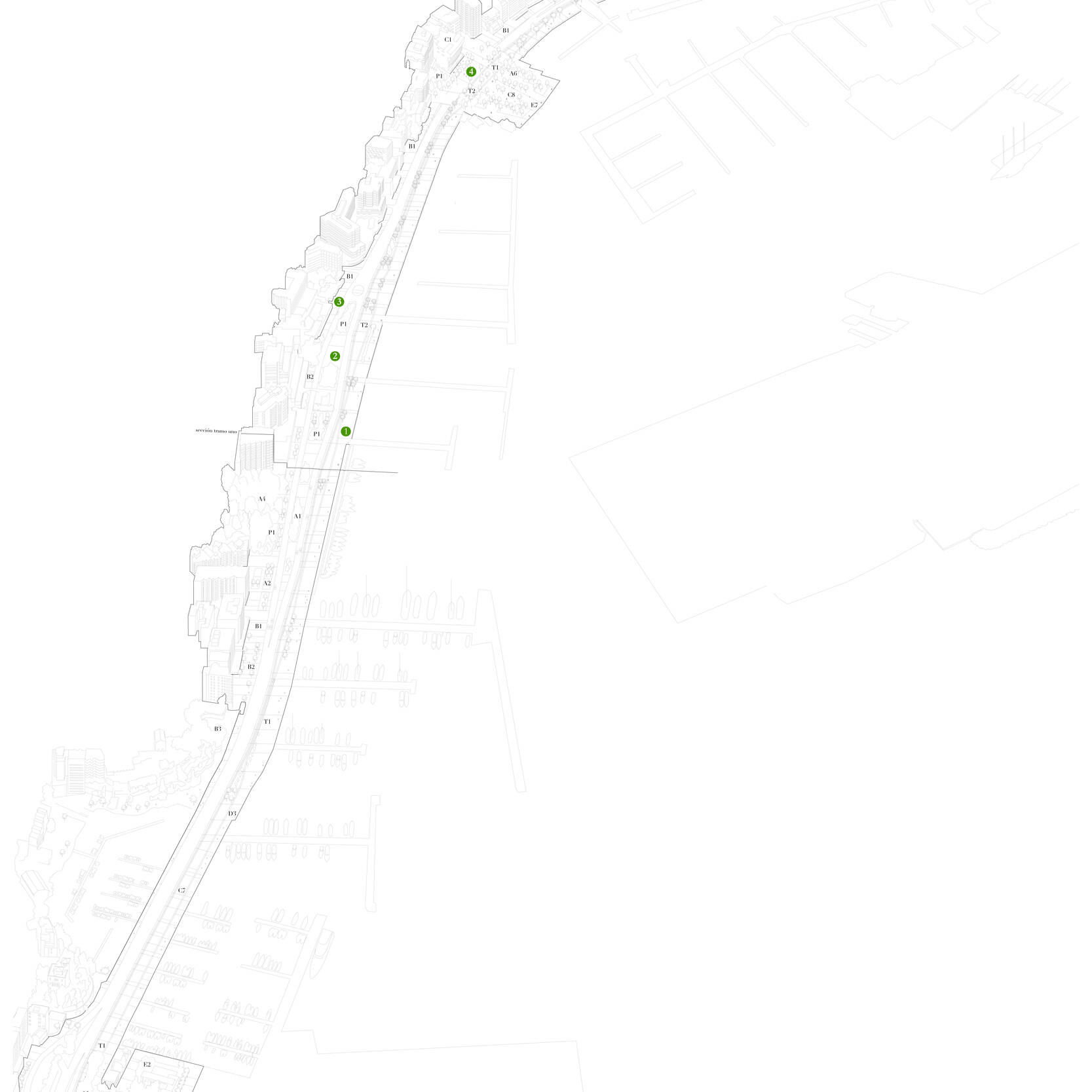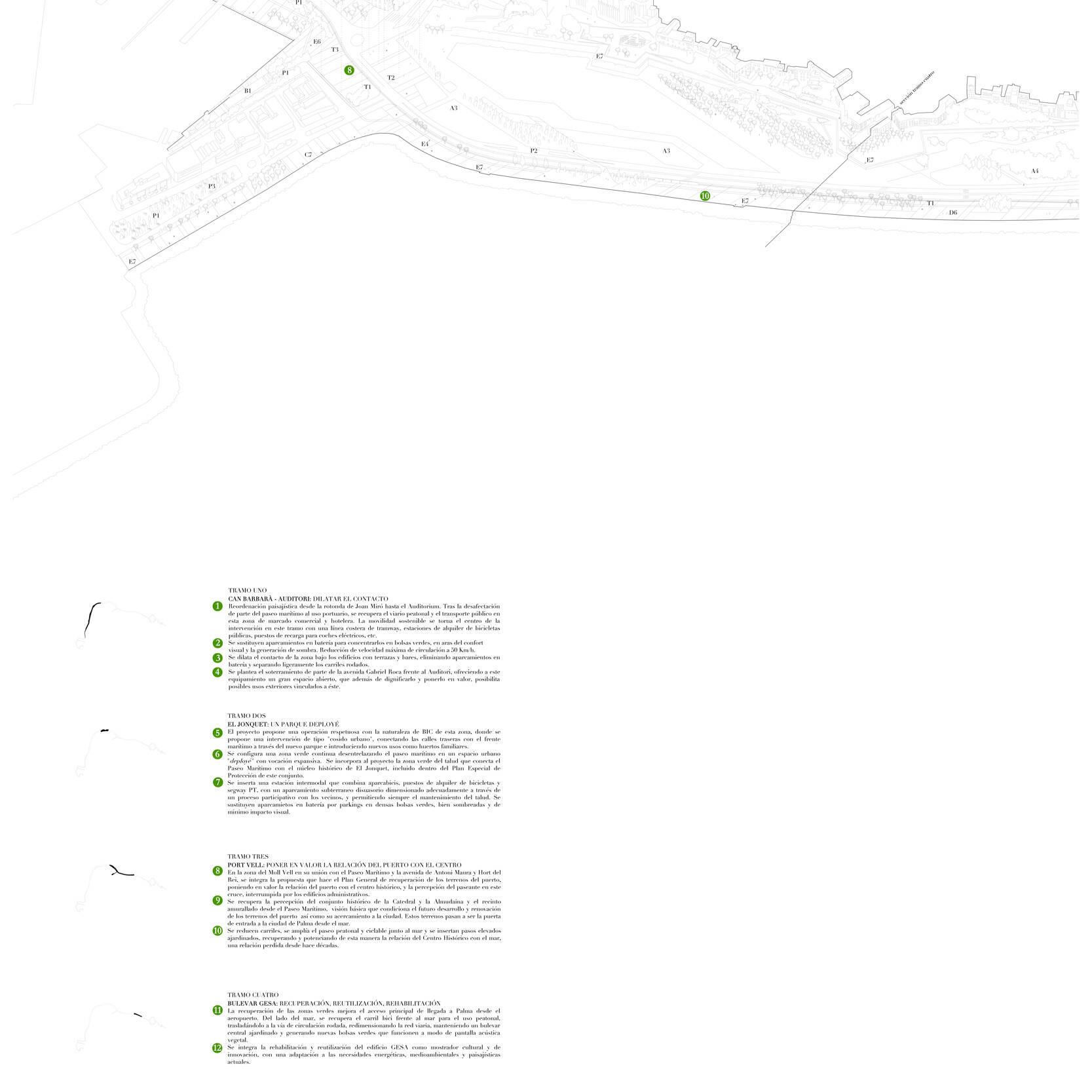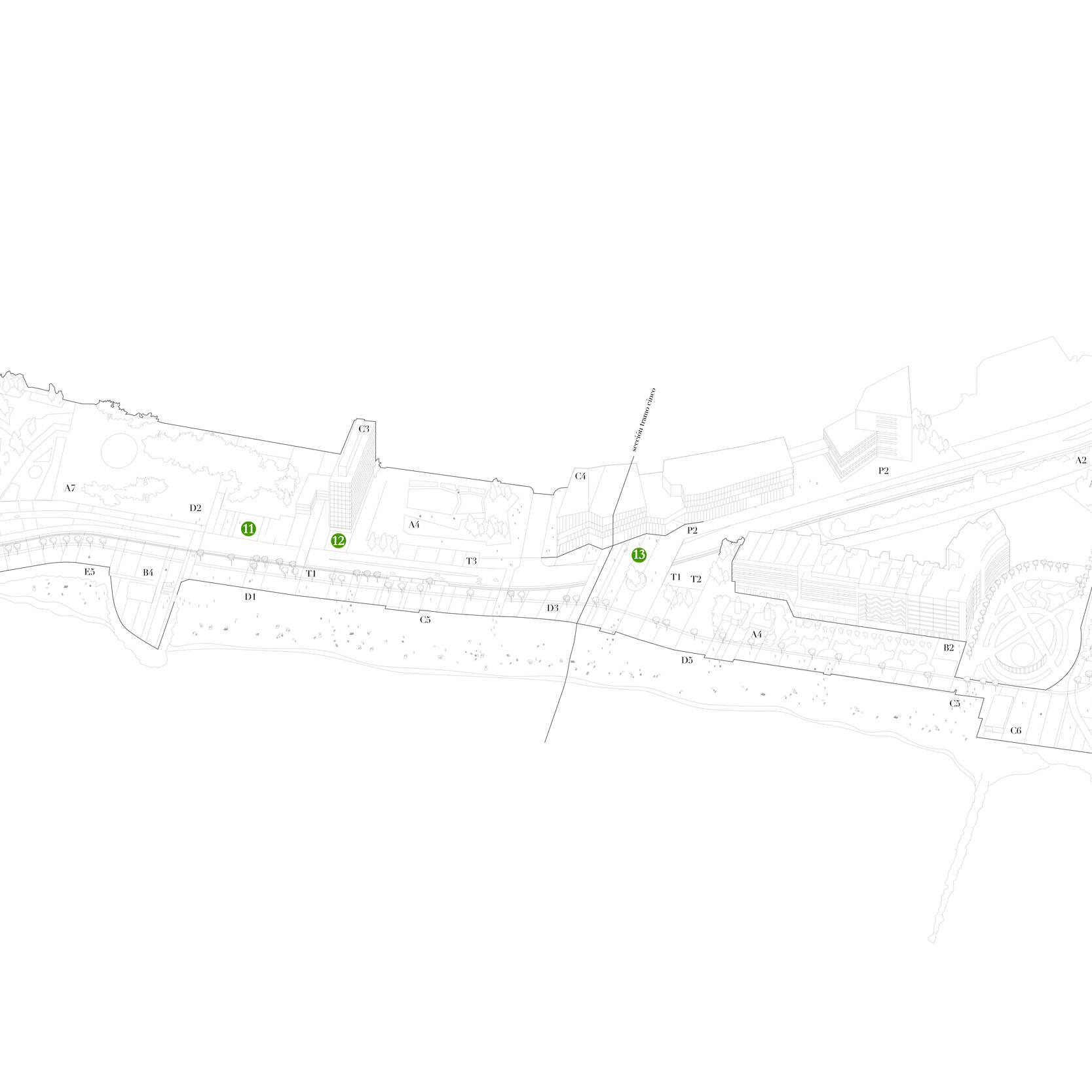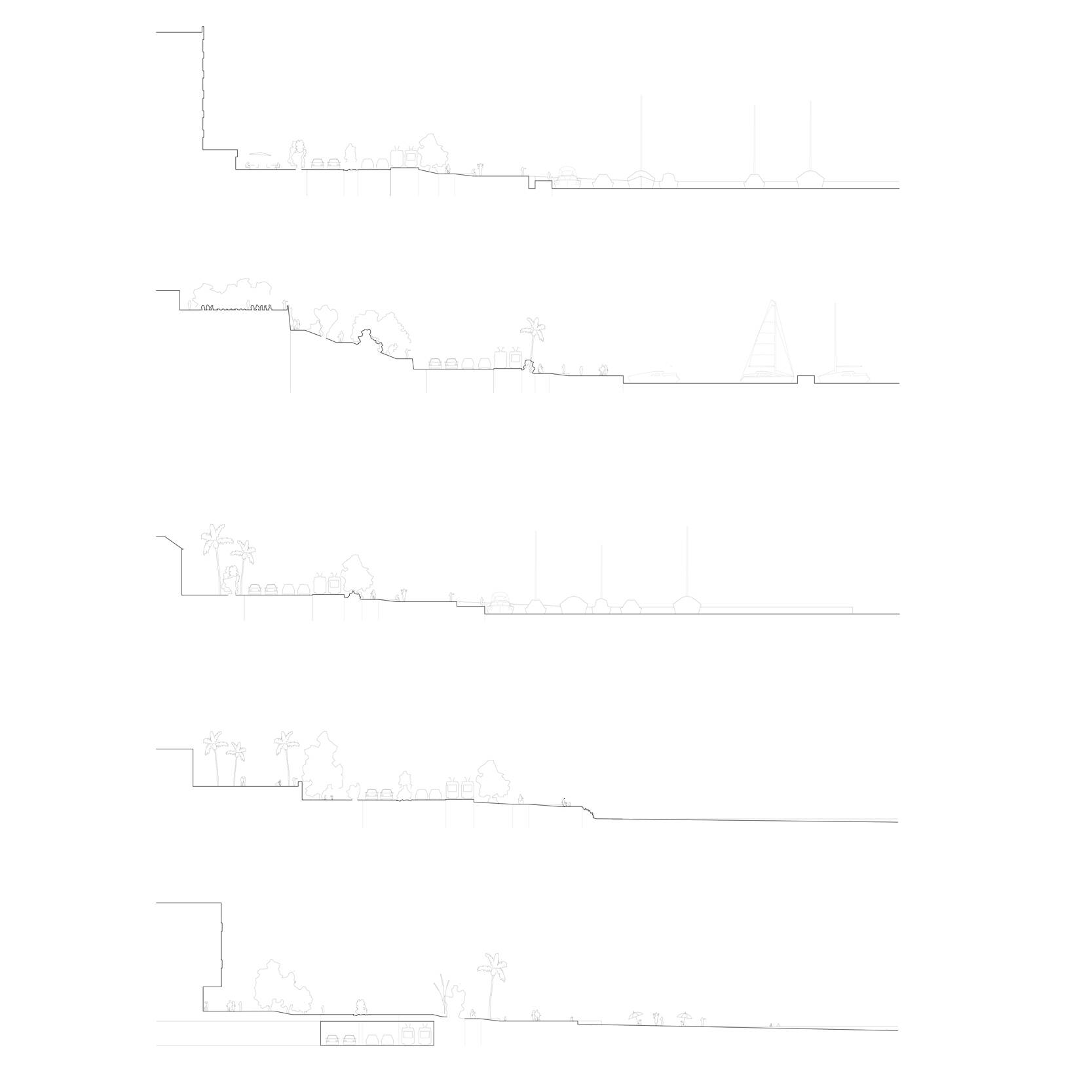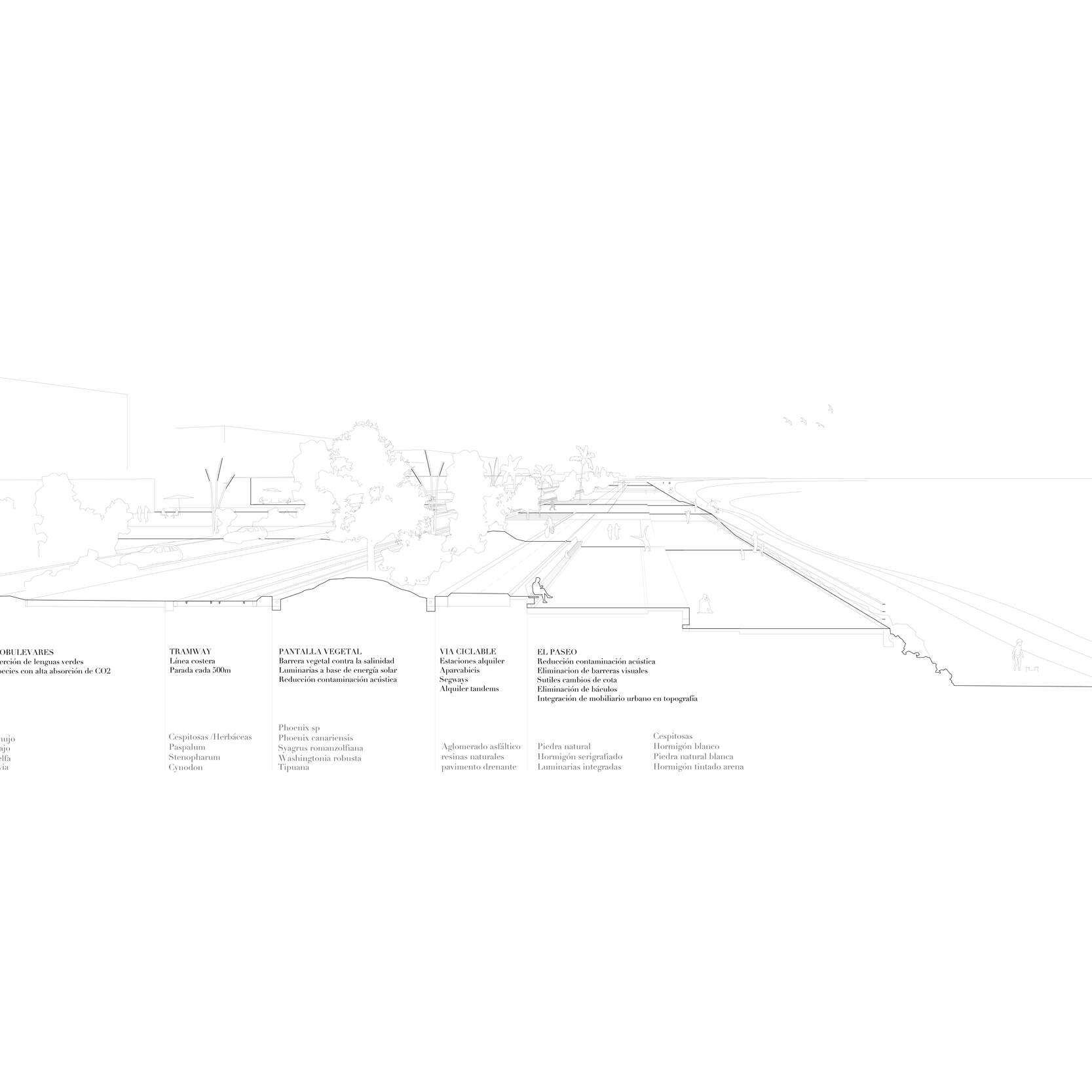Frente Marítimo de Palma, España
Europan Competition, 1st Prize
La Palma, Spain 2015
Client: Govern Illes Balears, Ayuntamiento Palma de Mallorca
Project team: Murielle Clair
PROGRAM PATTERNS
We have applied an external and independent variable as a pattern, capable of organising and assuming the form of the site. The insertion of these bands that are capable of integrating in one gesture multiple problems, implies a series of mutations that generate various public spaces which without adding new built elements allow to solve the problems of connexion, changes of altitude, vegetal densification, compatibility of uses, integration of furniture, insertion of equipment as well as incoherence of flow.
The project is in fact the result of making compatible an open system, abstract and generic capable of adapting itself to the singularities of the site and the premise of “no construction”.
However, can a project that adopts a decisive attitude of “no construction” be economically sustainable?
Along the maritime front appear pockets of land that could receive uses that generate financial profit. With the goal of sustainable management we would activate and connect these fields to the area of study so that the income that they generate will be able to finance other aspects of the project.
At the same time, we propose the strengthening of the local SLC; in exchange for the exploitation of these spaces we could insert green areas in parking zones, the insertion of uses of vantage point, etc. thereby decreasing the maintenance costs for the taxpayers.
How would a vessel crossing an area of swell find a reference of line of flotation in the horizon
THE OPPORTUNITY IS NOW
The north connexion between the harbour and the airport gives the opportunity for the requalification of the sea front and brings the great opportunity to return this space to the city and its people.
Entrance to Palma by the East. The proposal differentiates in one end the urban area with the beginning of the Bulevar and on the other end a direct connexion of the eastern motorway with the Via de Cintura giving priority to the itinerary of the bypass. The result is an access to the Molinar via the Via de Cintura and the Autovía de Levante.
Changes to the node of Porto Pi. In the long term it will be necessary to improve the exit from the western dike to the motorway in foresight of the future changes in traffic of merchandises and its distribution to the industrial areas and towns of Mallorca via the Via de Cintura.
SECTION ONE. CAN BARBARÀ – AUDITORI
Reorganisation of the landscape from the roundabout of Joan Miro until the Auditorium.
We recover the pedestrian road and the public transport in this area of commerce and hotels. Sustainable mobility becomes the centre of the intervention in this area with a coastal lane of tramway, bicycle renting stations, charging stations for electric cars, etc.
We concentrate the angled parking in green pockets as a mean to increase visual comfort and to generate shadow. We reduce the maximum speed to 50 Km/h
We increase the contact of the lower spaces of the buildings with terrasses and bars, eliminating parking spaces and slightly separating the driving lanes.
SECTION TWO. EL JONQUET – A DEPLOYED PARK
The project proposes an operation of urban sewing, connecting the rear streets to the seafront via the new park and introducing new uses as family gardens.
Here we configure a continuous green belt which unravels the seafront promenade in an urban space ‘deployé’ with an expansive vocation.
Incorporated into the project is a green area in the bank connecting the sea front promenade to the historic node of El Jonquet included in the Plan Especial de Protección of this complex.
There is the inclusion of an intermodal station with parking spaces linked to a bycycle and segway PT parking, with a subterranean parking correctly dimension through a participative process with the neighbors of the area as well as allowing to maintain the slope. Parking slots are substituted by parking areas in dense green pockets well shaded and with minimal visual impact.
SECTION THREE. PORT VELL – PUTTING IN VALUE THE RELATIONSHIP OF THE HARBOR WITH THE CENTRE
In the area of Moll Vell in its junction with the seafront promenade and the avenue Antoni Maura y Hort del Rei, we integrate the suggestion from the General Building plan for the recovery of the harbor, by emphasizing the relationship between the harbor and the historic centre, and improving the perception of the pedestrians in this junction that was interrupted by the administration buildings.
We recover the perception of the historic complex of the Catedral y la Almudaina and the fortified space from the sea front promenade, a basic vision that conditions the future development and renovation of the land of the harbor as well as the approximation to the city. These areas become the entrance to Palma from the sea.
By reducing lanes you increase the pedestrian and cycling paths close to the sea and by inserting raised gardens you recover and strengthen the relationship between the historic centre and the sea, a long lost relationship.
SECTION FOUR. BOULEVARD EDIFICIO GESA – RECOVERING, REUSE, RESTORATION
Its recovery as a major green area improves the main access of arrival at Palma from the airport.
The project proposes the rehabilitation of the building GESA as public administration equipment, with adaptability to the current energy, ambient and landscape requirements.
On the sea side, the treatment is the same as in the previous plate, by recovering the bicycle rail for pedestrian use and transferring it to the main road, resizing the road, and maintaining a central boulevard with vegetation which generate new green pockets that act as a vegetal sound wall.
SECTION FIVE. BULEVARD PALAU DE CONGRESOS – INCREASING SPACE
In front of the Palacio de Congresos we increase the pedestrian spaces solving the demand of a space for the celebration of large events. We give continuity to the green area and to the pedestrian promenade, forbidding the access to vehicles. A subterranean connexion towards the new boulevard grants access to the parkings of the hotel and the palace. We regulate the traffic coming from the sea front towards the Palace of Congress before arriving at the roundabout of Molinar, which avoids traffic saturation.
We move the cycle path towards the inside, giving the first lane to the pedestrians, which, in addition to the resizing of the carriage way would end in a green space in the sea shore promoting activities of leisure and sports.
The new boulevard of Portixol would be prolonged by a road until the avenue of Mexic, creating a transverse axis of movement preferably pedestrian which puts the city in direct communication with the sea and the harbour.


